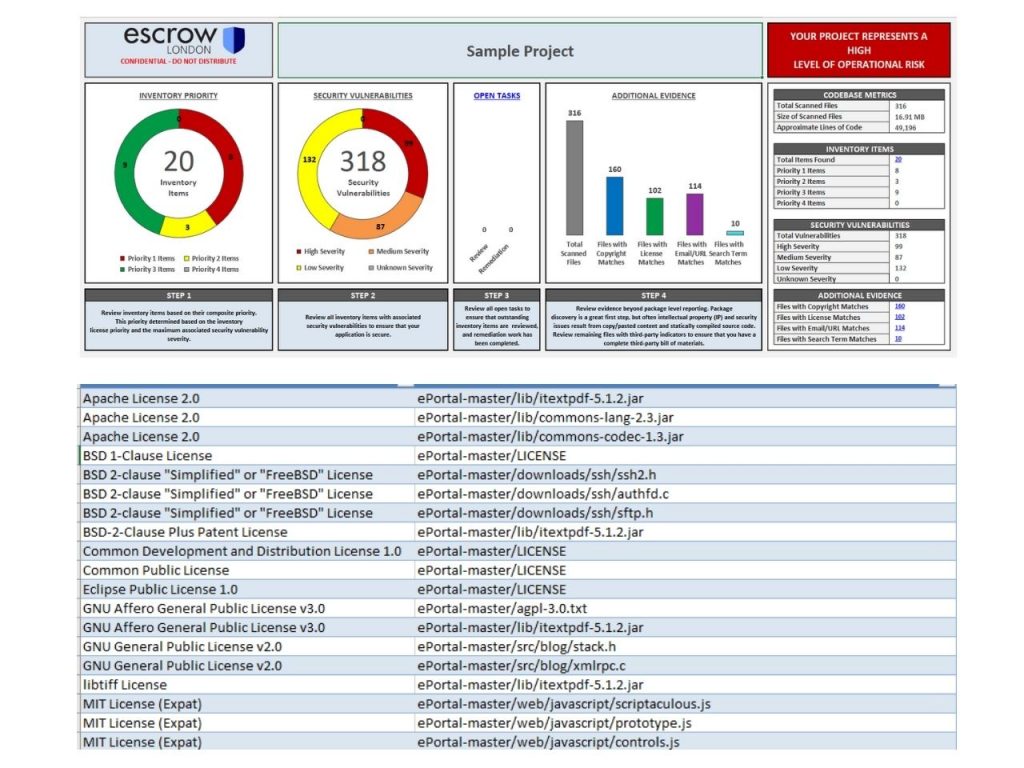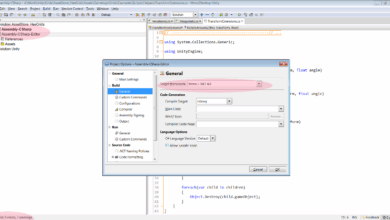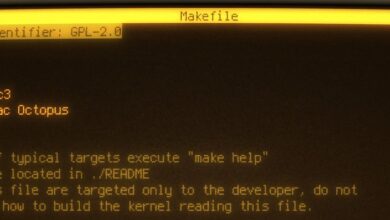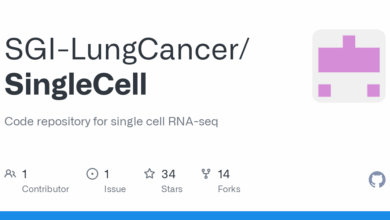Can Open Source Software Survive an Audit?
Can open source software survive an audit? This question delves into the complexities of open-source projects facing scrutiny. From defining the nature of open-source audits to the challenges they pose, we’ll explore the potential legal, financial, and technical hurdles. The transparency inherent in open source presents unique challenges when it comes to rigorous audits. Understanding these intricacies is crucial for open-source developers and communities navigating the increasingly regulated digital landscape.
The very nature of open-source software, with its collaborative development and public codebases, presents a stark contrast to the closed-source model. This difference directly impacts the audit process, requiring unique strategies for navigating the potential pitfalls and ensuring compliance.
Defining Open Source Software Audits
Open source software (OSS) projects, often developed and maintained by global communities, are vital components of modern technology. These projects are frequently scrutinized, not just for their technical merit, but also for their compliance with various standards and regulations. Understanding the nature of these audits is crucial for both developers and users.An open source software audit is a systematic examination of the software’s codebase, documentation, and associated processes to identify potential vulnerabilities, compliance issues, and areas for improvement.
The scope of an audit can range from a cursory review of security vulnerabilities to a comprehensive analysis of the software’s design, architecture, and adherence to licensing terms. Its purpose is to ensure the software meets specific requirements, is free from known flaws, and is used ethically.
Types of Open Source Software Audits
Different types of audits target specific aspects of the software. Security audits, for example, focus on identifying vulnerabilities that could be exploited by malicious actors. Compliance audits ensure the software adheres to relevant industry standards or legal frameworks, such as GDPR or HIPAA. Furthermore, code quality audits evaluate the software’s design, structure, and coding practices, while licensing audits ensure the software is being used in accordance with the applicable open source license.
These distinct audit types address specific concerns and contribute to a comprehensive evaluation of the software.
Reasons for Open Source Software Audits
There are several reasons why an open source project might undergo an audit. These include:
- Security Concerns: A growing number of OSS projects are scrutinized for vulnerabilities that might allow attackers to compromise the system. For example, the critical Log4j vulnerability highlighted the need for proactive security assessments in numerous open-source projects.
- Compliance Requirements: Organizations using OSS in sensitive contexts (e.g., healthcare or finance) might require audits to ensure compliance with regulations. This ensures that the software meets specific data protection requirements.
- Licensing Concerns: Ensuring the proper licensing is adhered to is essential. Audits can help confirm that the software is used in accordance with the terms of its license, preventing potential legal issues. For example, an audit can uncover unintended copyright issues or usage patterns that violate the license.
- Quality Assurance: An audit can identify code quality issues, design flaws, and potential areas for improvement, ultimately leading to better software reliability and maintainability. The audit process may identify areas for improvement in the development methodology.
Differences in Auditing Procedures Between Closed-Source and Open-Source Software
The auditing procedures for open-source and closed-source software differ significantly. In the open-source world, the code is publicly accessible, allowing for community involvement and a high degree of transparency. Conversely, closed-source software, where the code is proprietary, often limits access to the vendor. The open nature of OSS fosters collaboration among developers, whereas proprietary software often relies on internal resources.
Wondering if open-source software can withstand a thorough audit? Recent events like Japan’s push for open-source alternatives to Microsoft products, detailed in this insightful article on Japan striking against Microsoft with open source , suggest a growing interest in scrutinizing the codebase of these systems. This raises the question of how transparent and auditable these open-source projects truly are, and whether their structure can handle the rigors of a formal audit.
It’s a fascinating debate, especially as open-source models become more mainstream.
| Feature | Open Source | Proprietary |
|---|---|---|
| Auditing Process | Publicly available code, community involvement | Limited access, controlled by the vendor |
| Transparency | High | Low |
| Collaboration | Encouraged | Limited |
| Access to source code | Full access | Limited access |
Challenges to Open Source Software Survival During Audits
Open source software, built on collaboration and community contributions, often faces unique challenges when undergoing audits. These audits, while crucial for ensuring quality and compliance, can present hurdles related to legal frameworks, distributed development models, and financial implications. Navigating these complexities is essential for the long-term sustainability of open-source projects.The very nature of open source, with its decentralized structure and diverse contributors, introduces intricate layers of accountability and verification during audits.
Understanding these challenges is critical for project maintainers, contributors, and users to ensure a smooth and successful audit process.
Legal and Regulatory Hurdles
Open-source software projects can encounter legal and regulatory obstacles during audits, stemming from varying jurisdictions’ regulations. Differences in copyright laws, data protection regulations, and intellectual property rights across countries can create ambiguities. For instance, a project using code from a country with stricter intellectual property laws might face difficulties if the license agreement isn’t thoroughly documented and compliant.
Furthermore, evolving regulatory landscapes, such as data privacy mandates, can necessitate updates to the software and documentation to remain compliant.
Tracing Code Authorship and Contributions
The distributed nature of open-source development poses significant challenges in tracing code authorship and contributions. As numerous individuals contribute to a project, identifying the source of specific code segments or modifications can be a complex task during an audit. Version control systems, while essential, may not always provide a complete picture of the evolution of the codebase or the intent behind modifications.
This difficulty can lead to complexities in attributing responsibility for potential vulnerabilities or non-compliance issues.
Financial Implications of Audit Costs
Audits, even for open-source projects, can involve substantial financial costs. These costs can include expert fees, legal consultation, and potentially the need for software licenses or tools to facilitate the audit process. For smaller open-source projects with limited resources, these costs can pose a significant hurdle, potentially impacting the project’s ability to complete the audit or maintain ongoing operations.
For example, the Linux Foundation’s audits of critical open-source projects are well-funded, but this is not the case for many smaller initiatives.
Ensuring Compliance with Audit Standards
Compliance with specific audit standards in an open-source context requires careful consideration. Standards like ISO 27001, for instance, might demand documentation and processes that are not readily available or easily implemented in a decentralized open-source environment. This disparity can create challenges in demonstrating compliance with audit requirements, potentially requiring adaptation or simplification of procedures to ensure alignment.
Wondering if open-source software can withstand a rigorous audit? It’s a complex question, and the recent acquisitions and industry shifts, like IBM acquiring Xbox and Intel winning deals with Gateway and Dell (check out the details here: ibm gets xbox intel wins gateway and dell ), highlight the evolving landscape. Ultimately, the survival of open-source software during an audit depends heavily on its internal controls and community support, not just the size or influence of the companies involved.
Potential Vulnerabilities in Open-Source Software, Can open source software survive an audit
The following table highlights potential vulnerabilities within open-source software and how audits can affect their mitigation:
| Vulnerability Category | Example | Impact of Audit |
|---|---|---|
| Security flaws | Buffer overflow | Exposure to attacks, reputational damage |
| Licensing issues | Improper use of licenses | Legal liabilities, project termination |
| Intellectual property infringement | Use of third-party code without permission | Legal disputes, project delays |
Strategies for Open Source Software to Navigate Audits: Can Open Source Software Survive An Audit

Open source software, by its very nature, thrives on collaboration and transparency. However, this collaborative spirit can sometimes present challenges when facing external audits, particularly if they stem from compliance requirements or legal disputes. Understanding how to proactively address potential concerns and build robust audit trails is crucial for the long-term health and survival of any open-source project.Proactive preparation is key to successfully navigating audits.
By anticipating potential issues and implementing clear procedures, open-source projects can significantly reduce stress and ensure a smoother audit process. This involves more than just technical proficiency; it also necessitates a strong understanding of the project’s governance structure, community engagement, and documentation practices.
Proactive Audit Preparation
Open-source projects should anticipate potential audit concerns by implementing robust internal controls. This includes clearly defined roles and responsibilities within the project’s governance structure, ensuring that individuals or teams are accountable for specific aspects of the project’s development and maintenance.
- Establishing Clear Lines of Communication: Defining clear communication channels and procedures for receiving and responding to audit requests will streamline the process. This includes establishing a dedicated point of contact within the project team, and outlining protocols for escalating concerns or requests for further clarification.
- Maintaining Comprehensive Documentation: Maintaining meticulous documentation of all project decisions, changes, and contributions is essential. This includes version control logs, meeting minutes, and issue tracking system records. This documentation should be readily accessible and properly organized.
- Implementing a Robust Version Control System: Using a robust version control system (like Git) is critical for tracking changes, identifying potential vulnerabilities, and establishing a clear audit trail. Regular backups and thorough documentation of commits and pull requests are paramount.
Establishing Transparent Audit Trails
Building an effective audit trail is crucial for demonstrating the project’s integrity and compliance. This includes meticulously recording all significant decisions, changes, and contributions.
- Centralized Issue Tracking: A centralized issue tracking system, such as GitHub issues, should be used to document all reported bugs, feature requests, and potential security vulnerabilities. This provides a single source of truth for the audit team.
- Detailed Commit Messages: Meaningful and comprehensive commit messages are essential for understanding the rationale behind changes. Developers should provide context, reasons for modifications, and any relevant links to discussions or issues.
- Documentation of Decision-Making Processes: The rationale behind key decisions, including code changes and project direction, should be meticulously documented. This transparency builds trust and helps auditors understand the project’s development path.
Code Organization and Documentation Best Practices
Effective code organization and documentation directly impact the audit process. Well-structured code is easier to understand and maintain, reducing the time and effort required for an audit.
- Modular Code Design: Designing modular and well-documented code facilitates understanding and reduces complexity. Each module should have a clear purpose and well-defined interface. This reduces the potential for misunderstanding during the audit.
- Comprehensive API Documentation: Thorough API documentation ensures that auditors understand the intended functionality of the code and its interaction with other parts of the system. This includes clear explanations of parameters, return values, and error handling.
- Clear Code Comments: Comments should clearly explain the purpose and rationale behind code sections. Avoid vague or unnecessary comments. Focus on explaining the “why” behind code decisions.
Engaging the Community in the Audit Process
The community’s input can significantly enhance the audit process. By involving the community, projects can gather diverse perspectives and insights.
- Open Communication Channels: Establish clear and accessible communication channels (e.g., mailing lists, forums) for the community to provide feedback and address questions during the audit.
- Community Review Processes: Implementing a structured community review process for code changes and decisions will ensure that various perspectives are considered before implementation.
- Soliciting Feedback: Regularly solicit feedback from the community about the project’s development process and potential areas for improvement. This can proactively identify and address potential audit concerns.
Audit Response Flowchart
[A flowchart illustrating the steps a project can take to prepare for and respond to an audit, would be presented here. The flowchart would visually guide the reader through the process from initial notification to final report submission.]
Case Studies of Open Source Software Audits
Open source software (OSS) thrives on community collaboration and transparency. However, the very nature of open development can raise concerns regarding security and compliance. Audits, while often perceived as a hurdle, can be vital for identifying vulnerabilities and strengthening the software’s integrity. Examining real-world examples of OSS audits provides valuable insights into how these processes unfold and their impact on the projects.These case studies offer a practical perspective on the challenges and successes encountered during OSS audits, illustrating how communities react to audit findings and how these processes shape the future of the software.
Wondering if open-source software can withstand a rigorous audit? It’s a valid concern, especially as the tech landscape evolves. Asia, for instance, is actively searching for leadership in developing the next-generation internet, which is likely to have implications for open-source security practices. Ultimately, the survival of open-source software under audit depends on the transparency and commitment of its contributors, and whether the community can adapt to these new standards.
Examples of Open Source Software Audits
Several prominent open source projects have undergone security audits. These audits can vary significantly in scope, methodology, and outcomes. Understanding the specific context of each audit is crucial to drawing meaningful conclusions.
- The Apache HTTP Server, a cornerstone of the web, has been subject to numerous security audits throughout its history. These audits have consistently uncovered vulnerabilities, leading to patches and updates. The community’s rapid response to these findings showcases the proactive nature of security in open source development. The audits often employed automated tools and manual code reviews, targeting potential exploits in the server’s core functionality.
- The Linux kernel, the foundational operating system for countless devices, has been meticulously scrutinized by independent security researchers and organizations. These audits have revealed vulnerabilities across various components, from drivers to the core kernel. The results have invariably resulted in patches and improvements, highlighting the critical role of continuous security assessments in a project of this scale. Audits frequently involve the collaboration of multiple researchers and developers to identify and fix security issues, demonstrating the importance of collective effort in maintaining robust open source projects.
- Numerous smaller projects, while not as widely recognized, have also undergone audits. These audits, often initiated by individual researchers or security firms, can lead to substantial improvements in the project’s security posture. The outcomes of these audits, while not always publicly disclosed, can have a significant impact on the project’s longevity and community engagement. The methods employed can range from automated vulnerability scanners to manual code reviews, focusing on specific potential risks and weaknesses.
The resources used often depend on the project’s size and available funding.
Outcomes of Open Source Audits
The impact of an audit on an open source project’s future is diverse. Positive outcomes often include improved security, increased community trust, and enhanced project stability. Negative outcomes, though less frequent, can include project fragmentation or a decrease in user confidence if the audit findings are not effectively addressed.
- In some cases, audits reveal vulnerabilities that can potentially lead to significant security breaches if left unaddressed. The subsequent release of patches and updates is crucial to mitigating these risks. This underscores the importance of a robust and transparent response mechanism within the open source community.
- Audits can also highlight areas where the software’s architecture or design could be strengthened. This can lead to a more secure and reliable product in the long term. Consequently, audits can foster improvements in the project’s codebase and design.
- Negative outcomes, though rare, can sometimes arise. For instance, if the audit reveals significant design flaws or major security weaknesses, the project’s future might be impacted. However, these situations often prompt a re-evaluation and potential restructuring of the project, potentially leading to a more resilient and sustainable system in the long run.
Methods and Procedures Used in Audits
The methods used in open source audits vary significantly depending on the project’s size, complexity, and the specific goals of the audit. These methods range from automated scans to in-depth code reviews.
- Automated vulnerability scanners are commonly employed to identify known vulnerabilities in the software’s code. These tools can quickly scan large codebases, highlighting potential issues that require further investigation. Manual code reviews, often conducted by experienced security professionals, delve deeper into the code’s logic and identify potential vulnerabilities that automated tools might miss. The combination of these approaches provides a more comprehensive assessment.
- Static and dynamic analysis techniques are frequently used. Static analysis examines the code without executing it, while dynamic analysis involves executing the code under various conditions to identify potential runtime issues. The selection of appropriate techniques depends on the nature of the project and the specific risks being addressed.
- The participation of the open source community is often crucial in the auditing process. This can involve community members providing feedback, suggesting improvements, and helping to identify vulnerabilities. This collaborative approach can lead to more thorough and comprehensive audits.
The Future of Open Source and Audits
Open source software has thrived on collaboration and community-driven development. However, the increasing scrutiny of regulatory bodies and the evolving needs of enterprise adoption necessitate a more formal approach to ensuring quality and safety. This includes the critical role of audits, and understanding how open source projects will adapt to this new landscape is paramount.The future of open source audits will be significantly shaped by current trends.
These trends include a growing emphasis on security, the emergence of automated tools, and the increasing prevalence of legal and regulatory frameworks impacting open source projects. This evolution necessitates a proactive and adaptive approach from the open source community to maintain the project’s resilience and trust.
Predicting the Future of Open Source Audits
The growing adoption of open source software in critical infrastructure and enterprise applications is pushing the need for more rigorous audits. Expect audits to become more frequent and comprehensive, encompassing not only security vulnerabilities but also compliance with industry standards and regulations. Furthermore, the increasing complexity of software systems will necessitate audits to be more sophisticated, focusing on code quality, maintainability, and potential vulnerabilities.
This trend mirrors the increasing emphasis on security audits in proprietary software, highlighting a shift in how software quality is evaluated and assured.
The Role of Automated Tools in Open Source Audits
Automated tools are poised to play a crucial role in streamlining and enhancing open source audits. These tools can analyze codebases for potential vulnerabilities, identify deviations from coding standards, and assess compliance with security best practices. Tools like static analysis platforms, vulnerability scanners, and automated testing frameworks are already emerging and improving. This automation can significantly reduce the time and resources required for audits, allowing for more frequent and thorough assessments.
For instance, tools that identify potential code injection flaws or SQL injection vulnerabilities can be integrated into CI/CD pipelines, proactively identifying and addressing issues early in the development process.
Implications of Emerging Legal and Regulatory Frameworks
Emerging legal and regulatory frameworks are likely to introduce new requirements for open source projects, especially in areas like data privacy and security. These frameworks will mandate specific audit procedures and reporting requirements, which will need to be addressed by open source communities. For example, GDPR compliance might necessitate audits of data handling within open source projects. This means that open source developers will need to adapt their processes and tools to meet these evolving regulatory landscapes.
Challenges and Opportunities for Open Source in a Future with More Audits
The increased frequency of audits presents both challenges and opportunities for open source software. Challenges include the potential burden of compliance costs and the need for greater transparency. Opportunities include improved security, enhanced trust, and greater adoption by enterprises. For example, open source projects that proactively embrace auditing will likely attract more corporate investment and support, leading to further development and improvements.
Conversely, projects that fail to adapt to these changes may find themselves at a disadvantage.
The Role of Community Engagement in Future Audits
Community engagement is crucial for ensuring that open source software remains resilient and adaptable to future audits. Active collaboration and participation from developers, users, and maintainers in the audit process can foster a culture of security and compliance. This collaborative environment can help identify and address vulnerabilities more efficiently. A strong community can provide a diverse perspective and resources for addressing audit findings.
For instance, a dedicated community forum or chat channel can be established to discuss audit results, facilitate the development of remediation strategies, and support compliance efforts.
Outcome Summary
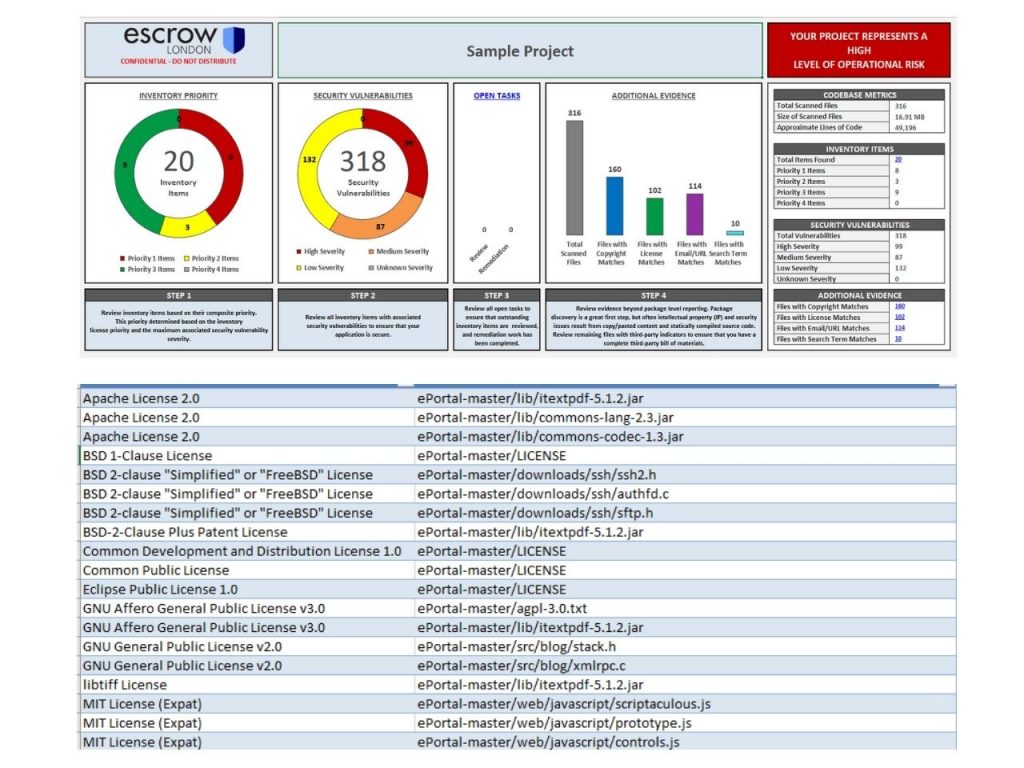
In conclusion, open-source software’s ability to withstand audits hinges on proactive strategies, community engagement, and a commitment to transparency. While challenges abound, the resilience and adaptability of the open-source community, coupled with thoughtful preparation, can pave the way for successful audits and continued innovation. The future of open source likely includes more audits, demanding a forward-thinking approach from developers and communities alike.

